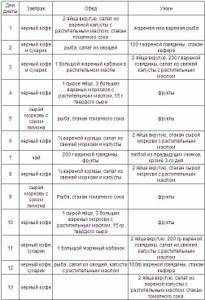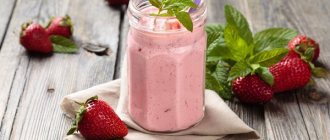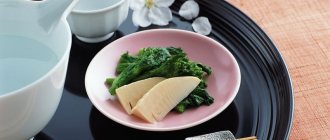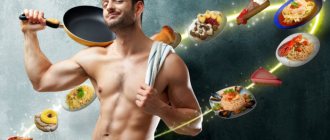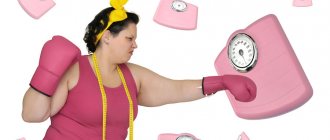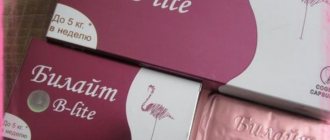Some nutritionists are of the opinion that salt can be completely eliminated from the diet, since a person receives the minimum required amount directly from the foods he eats. Others believe that without sodium chloride (table salt), hydrochloric acid cannot be produced normally in the stomach, which is responsible for proper and healthy digestion. One way or another, both sides come to the consensus that a salt-free diet is necessary when functional abnormalities appear in the body.
Why do we need salt
Many people argue that salt is not needed at all. Actually this is not true. Sodium chloride (table salt) takes part in water-salt metabolism. It helps nutrients pass through cell membranes. Sodium chlorine is involved in the functioning of the heart, muscles, and nervous system. If there is not enough salt, cramps, headache, weakness, and nausea may occur.
Excess salt prevents the removal of excess fluid through the kidneys. This can lead to kidney failure and other diseases. Excessive sodium intake causes calcium to be excreted in the urine. Lack of calcium in the body makes our bones fragile. It also leads to the formation of kidney stones. According to doctors, excess sodium chloride in the body leads to overstrain of the arteries. This may cause:
- increase in blood pressure;
- rupture of arteries;
- heart attack or stroke.
Dietitians are of the opinion that a salt-free diet is useless for weight loss. When sodium chloride is excluded from the diet, the body loses fluid. The fat stays in place. We are not talking about any weight loss. When you resume your normal diet, the fluid returns. You can't completely eliminate salt. As I indicated above, this will lead to a disruption of the water-salt balance. And as a result, to serious illnesses. Be sure to read my article “Salt: benefit or harm.”
Before and after reviews of those who tried to eat without salt
I believe a salt-free diet is therapeutic. It is suitable for pregnant women and people with chronic diseases. Those. it must be prescribed by a doctor. This diet is not very effective for weight loss. There are many reviews on the Internet, you can even find them with before and after photos of people losing weight. I advise you to read some of them:
Olesya: I’ve been eating without salt for 2 months, although I didn’t abuse it before the diet. I completely excluded sausage, pickles, and fast food from my diet. I lost just a little weight, but I looked and felt better.
Oksana : I don’t add salt to the dishes. From chips, sausages, etc. refused completely. The weight comes off slowly, only 3 kilograms in two months.
Alena : The Japanese diet helped me lose 6.5 kilograms. The joy knew no bounds, although not for long. I started eating as usual - the kilograms returned and doubled.
Olya : I got hooked on this diet with my husband. He is hypertensive, his doctor prescribed his diet. I myself swell in the morning, I thought it wouldn’t hurt me. Yes, the swelling disappeared, 2 kg were lost in two days. But I feel terrible, my blood pressure is 80/60. My eyes are sunken and I look terrible. The diet is not suitable for everyone; you should consult your doctor.
Alexander : I haven’t salted food at all for a whole year. I tried to eat without salt. Then I couldn’t stand it and went back to my normal diet... and started adding too much salt to everything! The conclusion is simple: there is no need to rush from one extreme to another. Nutrition should be balanced. Then you won't need such extreme diets.
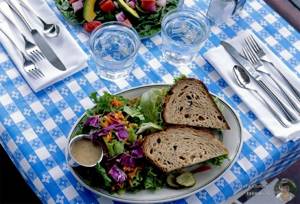
Many people are interested in the question of how long you can stay on such a diet. If we are talking about a hard regime - from 3 to 14 days. If you just limit yourself to salt, judging by the reviews, from several days to a year. Sodium chloride contains no calories, so it will not make you gain weight. But foods rich in sodium are quite high in calories. These are sausages, cheeses, fast food, etc. You need to give preference to natural products. Fruits, vegetables, lean meat. Cook yourself, rather than buy semi-finished products.
ARTICLES ON THE TOPIC:
- Do you want to lose weight without fainting from hunger? A low-carb diet will help you! Reviews…
- Effective Japanese diet, reviews of those who have lost weight with before and after photos
- Cucumber diet for weight loss - menu options, reviews and results of girls who lost weight
What is this for?
The most important question to ask yourself before going on a salt-free, sugar-free diet is “Why?” Why lose weight? Typically the answer options are:
- To please my husband.
- Attract the attention of men.
- Buy your favorite new item.
- Get rid of complexes.
And with that we say stop. There is no need to lose weight. Live as you live.
Now there will be outrage about this. Well, we want to achieve certain goals. Do you seriously think that you will lose weight and get rid of your complexes overnight? Or will you start attracting crowds of men? This is nonsense, all the problems are in our heads. You can be a breathtaking fatty who gathers crowds of admirers next to you. Or you can have the figure of a model, a mop of luxurious hair, huge eyes and at the same time be notorious.
Is that harsh? Yes, but honestly. A woman loses weight in order to please herself first and foremost. Let's remember this: we are the only ones always at home. Husbands leave, dresses are torn, new clothes turn into old clothes. It's all superficial. Therefore, we agreed - we’ll lose weight for ourselves.
Contraindications and consumption rates
Let me make a reservation right away: contraindications for salt do not mean its complete exclusion from the diet. As a rule, food is simply not added additional salt. Products containing small amounts of salt are allowed. More salty foods are kept to a minimum and replaced with unsalted and lightly salted foods.
A salt-free diet is indicated for hypertensive patients, heart patients, and people with kidney disease. Also, such a diet will be useful for pregnant women, but only according to indications.
During pregnancy, fluid is retained in the body. Chronic diseases may also worsen. If a pregnant woman has kidney or heart problems, she is prescribed a salt-free diet. These are mainly dairy products, cereals, vegetables and fruits. The appointment must be made by a doctor! Under no circumstances should you radically change your diet on your own.
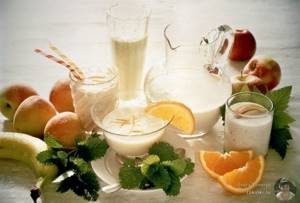
Sodium chloride is found in all the prepared foods we buy. The norm for an adult, healthy person is 5-6 g per day. This is approximately one teaspoon
This 6g includes all the sodium you need in your daily diet. Those. in a piece of bread, sausage and cheese, a bowl of soup, etc.
Prohibited
What should you not eat under any circumstances? All the most delicious and favorite things, alas. This:
- baked goods, including bread;
- sweets;
- sweet fruits and berries;
- cereals;
- smoked;
- marinades;
- pickles;
- sausages and sausages;
- cheese;
- spices;
- carbonated drinks;
- semi-finished products.
Don't be sad ahead of time. Now we will create a sample menu. You will see that there is nothing wrong with the diet.
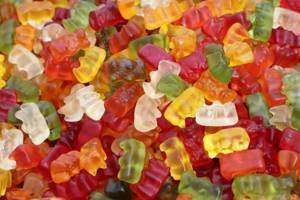
Foods containing sodium chloride
As I already said, everything bought in a store contains salt. Sodium is also present in vegetables and fruits, but there is not much of it. In 100 g of apple there is only 8 mg, in potatoes 30 mg, in beets 260 mg. Even if you don’t salt foods at all, sodium still enters our body. I would like to cite some products with sodium chloride. The data varies from source to source; we will consider it approximate.
| Product | NaCl content, mg (per 100 g of product) |
| Sea kale | 520 |
| Egg | 134 |
| Mussels | 290 |
| Sausages | 2260 |
| Soy sauce | 5600 |
| Cheeses | from 800 – 3500 |
| Salty sticks, cookies | 1750 |
| Pickles | from 1500 |
| Rye bread | 430 |
| Wheat bread | 230 |
| Sauerkraut | 800 |
| Tuna canned | 500 |
| Sausages | 2500 |
| Salted cucumbers | 3300 |
| Corn flakes, muesli | 360 — 1500 |
As you can see, sticking to 5-6 g of daily salt intake is very difficult. 5 slices of bread contain almost the daily requirement, as does 200 g of sausages. This means that it is better not to add salt to the food. If you are a lover of sausages, cheeses and pickles, it is better to limit their consumption. But what about without your favorite products? And for many people, food that is not salty loses its taste. Let's think about how to replace salt.

Garlic, parsley, green onions, cilantro, pepper, and basil add piquancy to the dishes. Don't forget about lemon juice. It perfectly replaces salt in salads and more. Ginger, paprika, and curry also give a unique taste. Spicy herbs can be added to vegetable oil and prepared delicious sauces.
Japanese diet
The main daily ration for the diet is protein foods. At the same time, during the weight loss period (two weeks), a strict ban on sugar and salt is introduced. You cannot add them to even already prepared dishes. The main emphasis during the diet is on boiled or steamed foods. How much can you lose on a diet? In two weeks, it is possible to lose up to 10 kilograms of excess weight, provided that they are really extra. This is a very effective way to lose weight, as well as a way to improve the health of the body.
The most preferred products using Japanese technology are:
- lean meat;
- fish;
- eggs;
- berries;
- beans;
- vegetables;
- fermented milk products.
Contrary to popular belief, the diet is not rice, nor is it a cereal diet. Moreover, cereals such as rice, buckwheat and millet should be completely abandoned during the period of weight loss. You can replace them with vegetables, which are the main products for preparing side dishes.
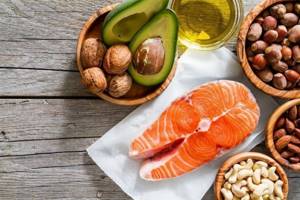
Losing weight with the Japanese salt-free diet is quite simple if you think through food recipes in advance.
Sample diet for every day
The menu during the diet is quite extensive, since a huge number of dishes can be prepared from acceptable products. For example, fruit salads with natural yogurt are good for breakfast. In this case, you can combine sweet and unsweetened fruits, this fills the need for a daily dose of glucose. For lunch, vegetable or fish soups with a lot of greens are always relevant. But the main role is given to the main courses, which are eaten for both lunch and dinner.
Example of second courses:
- Steamed vegetables with fish or meat. Vegetables such as green beans, celery, bell peppers, and zucchini go well together. To make the dish more rich, it is seasoned with herbs or garlic. Marine low-fat fish are best suited for the diet. For example, pollock or cod. To prevent the fish from being dry, you can sprinkle them with lemon juice after steaming.
- A simple yet nutritious vegetable Greek salad makes a good dinner or lunch. The classic recipe includes the following vegetables: cucumbers, tomatoes, bell peppers, onions. Additionally, add a large amount of herbs, olives, feta cheese and olive oil. By the way, there is no need to exclude it from their diet. You can also prepare any vegetable salads, season with olive oil, lemon juice, and medium-fat sour cream. The Chinese carrot and cabbage salad recipe is also very simple. Grate the carrots on a medium grater, chop the cabbage finely, mix everything, season with soy sauce or lemon: fast, satisfying, tasty.
- Boiled vegetables are good as a second course, either independently or in combination. For example, boiled carrots or zucchini are suitable for snacks or late dinner. Their combination is a separate dish, which can be seasoned with vegetable oil.
During the first three days of a salt-free diet, it is allowed, but not recommended at all, to add a small amount of salt to prepared dishes. That is why, before changing your meal plan for 2 weeks, you can prepare for it in advance by gradually reducing the amount of salt from day to day. This way, the withdrawal process will be easier for the body, without causing stress.
How to limit consumption without harm to health
In fact, there is nothing complicated about it. Avoid processed foods or reduce their consumption to a minimum. Salt food when it is ready, in portions. Do not use ready-made sauces, such as ketchup, tartar and others. You can prepare the sauces yourself. Use sea salt instead of table salt. It's much more useful.
Of course, it’s up to you to decide whether to use a salt-free diet for weight loss or not. But it seems to me that it’s enough just to choose a balanced menu for every day. Then there will be no excess water in the body, and health will be normal. I hope the article is useful to you. See you again and don't forget to subscribe for updates!
Sincerely, Olga Steshkina
Menu for 14 days
- For three days, eat 0.5 kg of skinless chicken breast.
- For the next 3 days, eat only low-fat fish, the daily amount is 500g.
- For another three days, the diet will consist of only oatmeal, buckwheat or pearl barley porridge with water. They can be combined with skim milk, or add a little honey.
- 1-2 kg of vegetables, excluding potatoes, must also be consumed within three days.
- In the last 2 days, it is recommended to eat fruit (bananas excluded) in the amount of 1-2 kg.
When on a salt-free diet, you need to drink clean water (at least 1.5 liters) or herbal tea with honey.
Another menu option in the form of a table:
